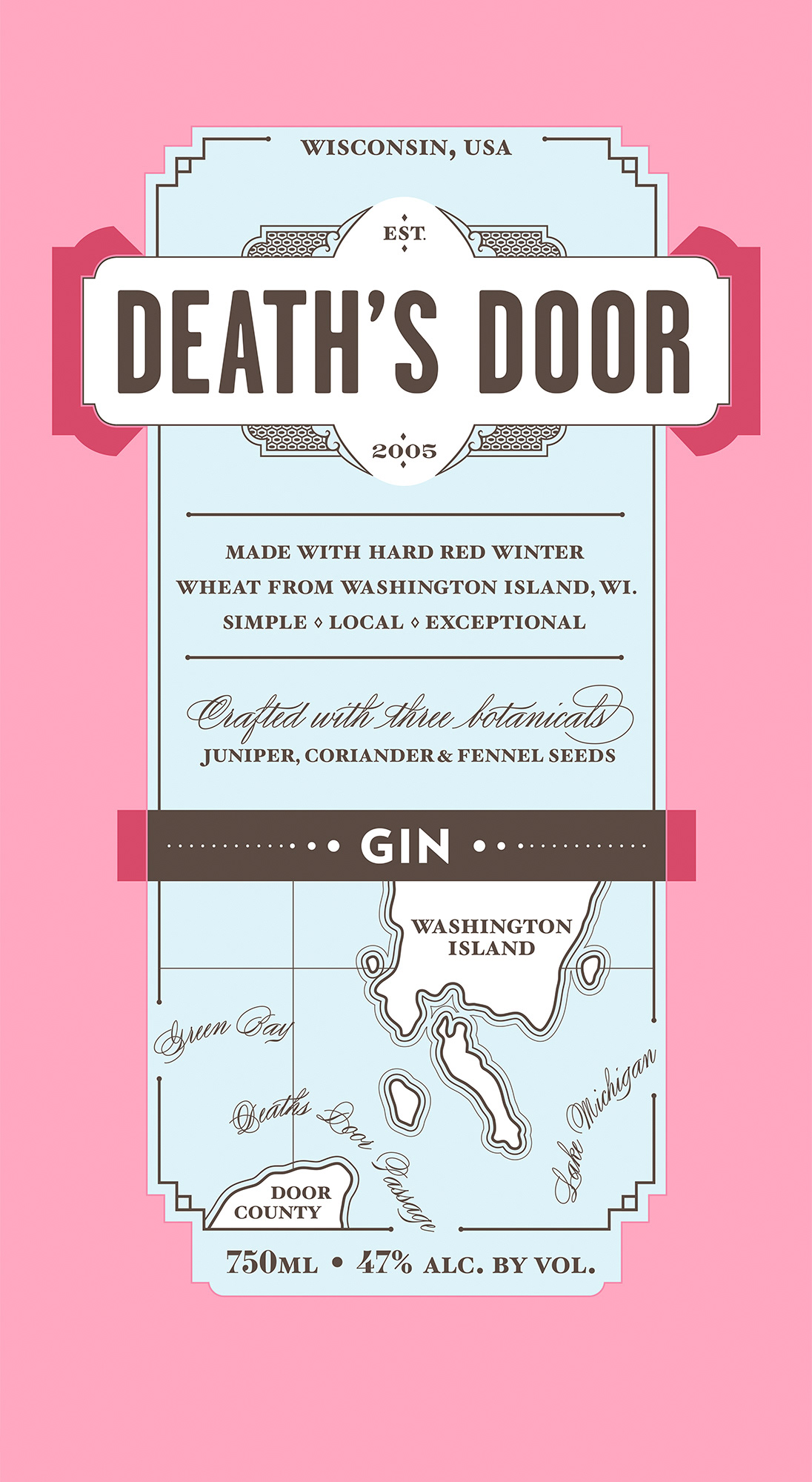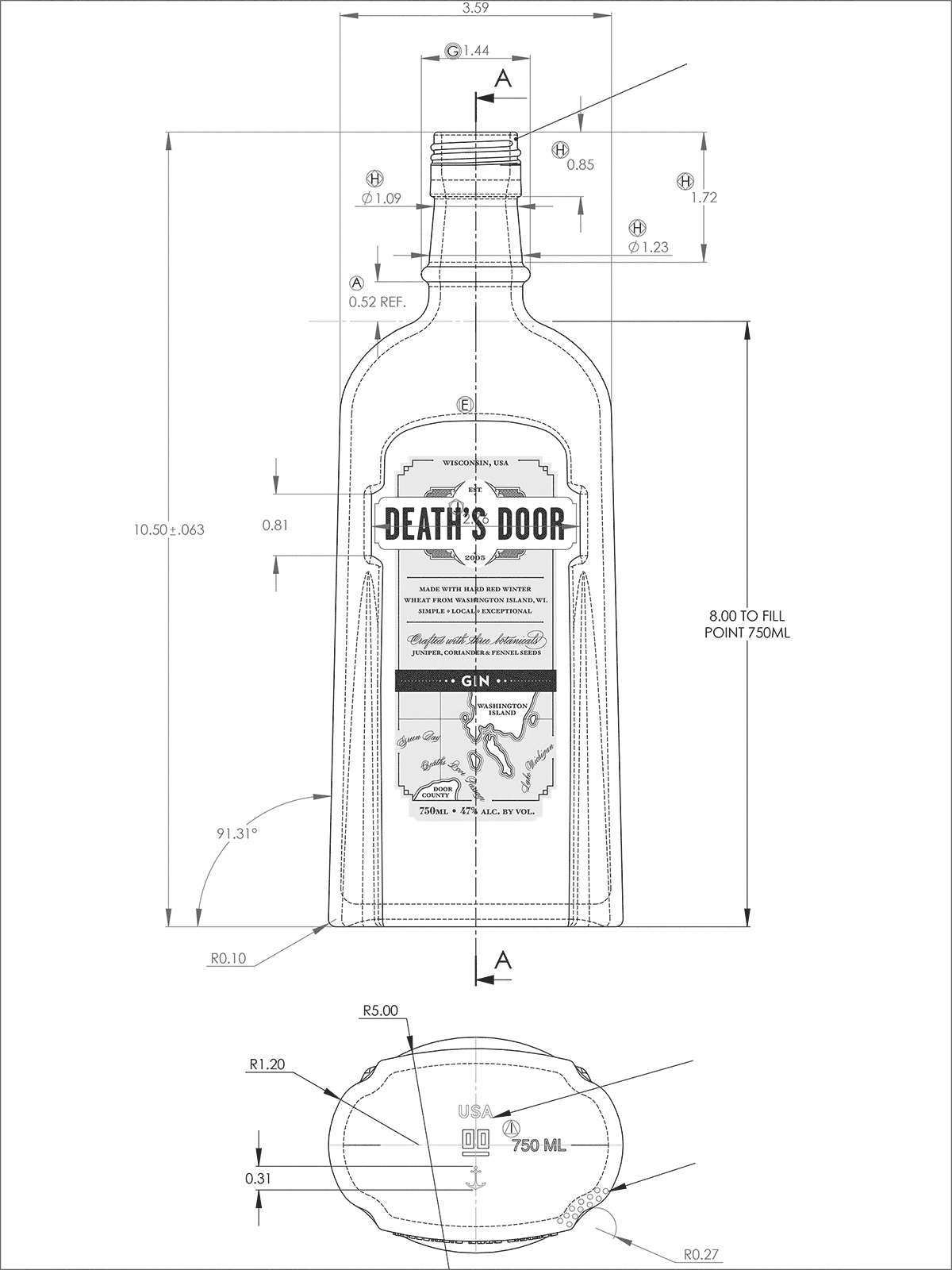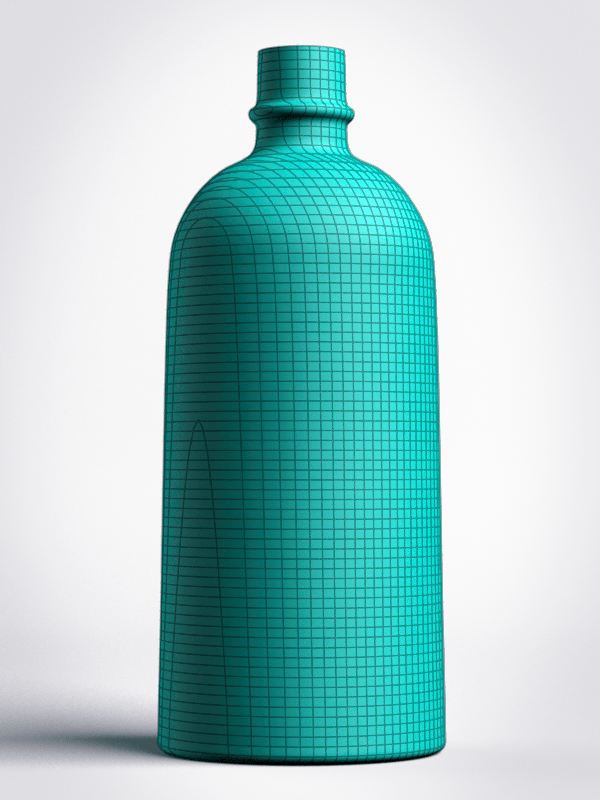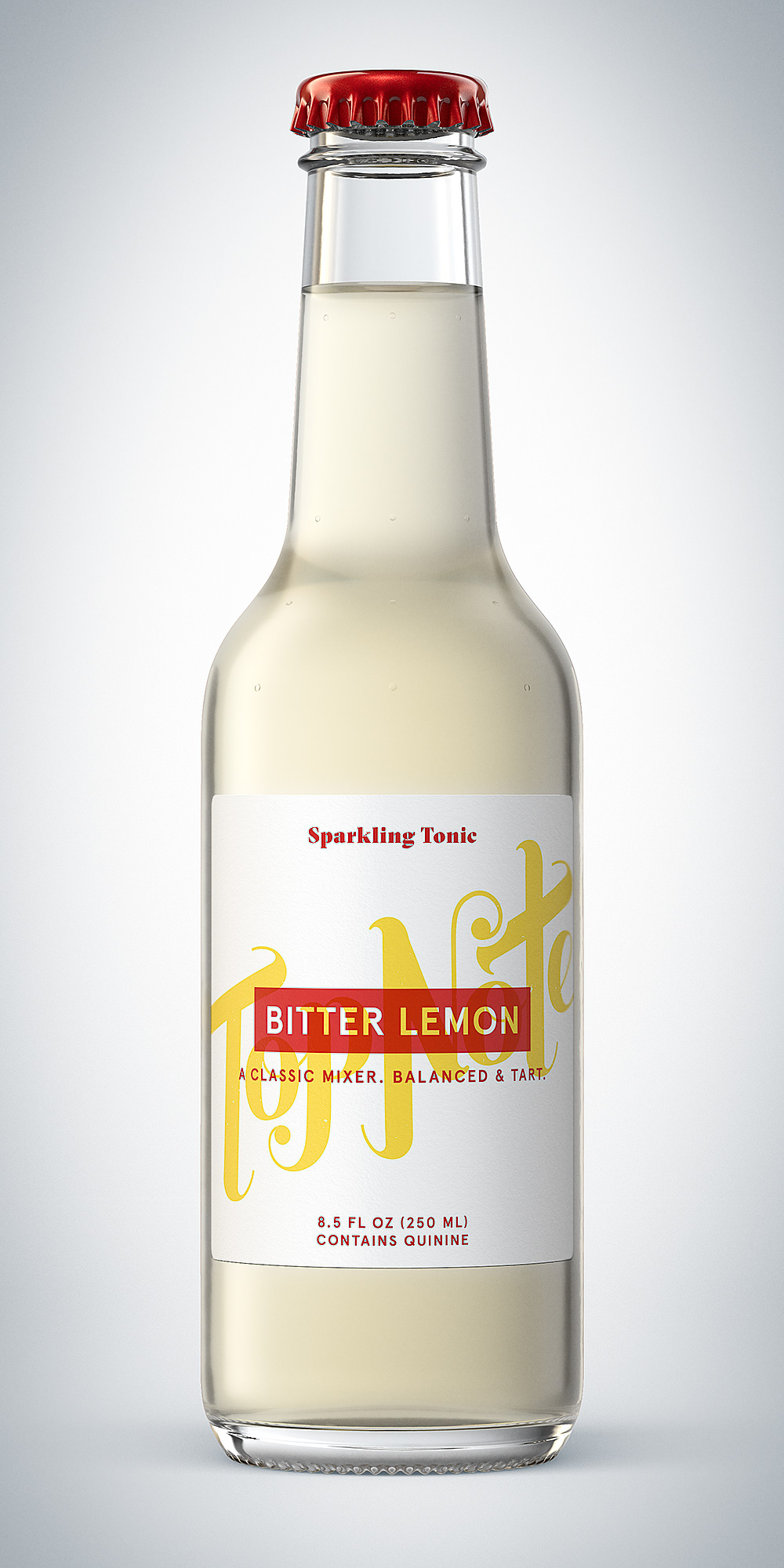For design firm Grip, I constructed a custom 3D model of a Death’s Door Spirits bottle and cap and created product renderings.
Death’s Door Spirits uses the same custom bottle for a number of spirits. Changing labels was a snap since everything was in 3D.



Photoshop files for the front product labels with the alpha channels highlighted in red.
After the first label was correctly positioned on the bottle, all that had to be done in the 3D application to change to a new label was to direct the link to the new label’s Photoshop file. The shape of the label is trimmed out in the 3D application using an alpha channel that is in the Photoshop file.
The virtual photographic lighting studio I created as seen in the 3D application’s viewport and then fully rendered.
The virtual lighting tools I used gave me ultimate control over the lighting of the scene. They mimic the softbox lights used in an actual commercial photography studio and allow control over 18 different characteristics of the lights. (You can even dial in a specific amount of wrinkling in the translucent fabric on the front of the softbox light). For this bottle, I relied heavily on the ability to make small changes in the size and position of each softbox light. This allowed for exacting control over the reflections and shading that would show off the shape and features of the bottle and clearly present the product labeling.


Left: The technical drawings provided by the bottle designer. Right: I began with a simple, revolved bottle and then added custom features as outlined in the technical drawings.
One final rendering of the Death’s Door bottle for their Black Earth Bourbon.
Below are additional bottle and bottle-related renderings.



Also for Grip, I constructed a custom 3D model of the Top Note Tonic bottle and cap and created product renderings.
My 3D model of a cardboard box with Grip’s graphics applied.